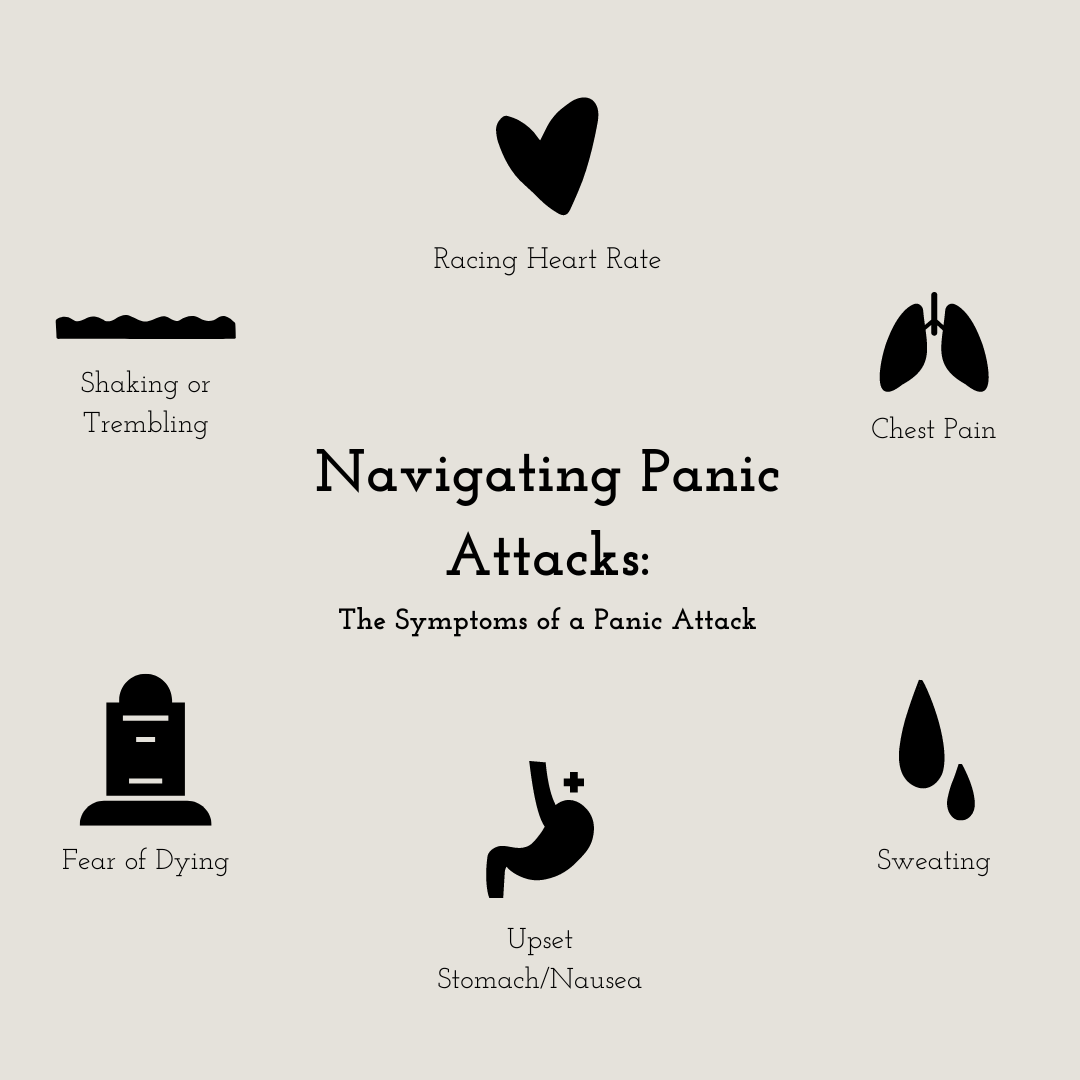Navigating Panic Attacks: How Therapy and
By Stacey Lee, M.A, LPCC

Panic attacks are overwhelming experiences that can feel like being caught in a storm without shelter. They strike suddenly, often leaving individuals feeling powerless and anxious about when the next one might occur. If you've ever experienced a panic attack, you're not alone. Many people struggle with these intense episodes, but there's hope and help available, especially through therapy.
Understanding Panic Attacks:
Panic attacks are intense surges of fear and anxiety that can come seemingly out of nowhere. They are accompanied by physical symptoms such as rapid heartbeat, sweating, trembling, shortness of breath, and a sense of impending doom. For those who experience them, panic attacks can be debilitating, affecting daily life and causing avoidance behaviors to prevent future attacks.
Inside Out 2: A Unique Perspective on Emotions and Panic Attacks
In "Inside Out 2," the sequel to Pixar's original film, Riley experiences a significant emotional journey that includes her experiencing a panic attack. As Riley navigates the beginning of adolescence, more complex emotions – Anxiety, Envy, Embarrassment, and Ennui (boredom) – join the original crew of Joy, Sadness, Anger, Fear, and Disgust.
The depiction of Riley's panic attack in "Inside Out 2" provides a poignant illustration of how overwhelming emotions can manifest physically and mentally. Her emotions scramble to manage the crisis, showcasing the complexity of panic attacks and the role of different emotions in coping and resilience.
Therapy as a Path to Healing:
Therapy offers a crucial path to understanding and managing panic attacks. Several therapeutic approaches have proven effective in treating panic attacks:
- Cognitive-Behavioral Therapy (CBT): CBT helps individuals identify and change negative thought patterns and behaviors that contribute to anxiety and panic attacks. It teaches coping strategies, such as gradual exposure to feared situations, to reduce the intensity of panic attacks.
- Mindfulness-Based Approaches: Mindfulness practices, including mindful awareness of thoughts and sensations, can help individuals develop a non-judgmental awareness of their panic symptoms. This approach encourages acceptance of uncomfortable feelings and teaches skills to stay present and grounded during episodes.
- Dialectical Behavior Therapy (DBT): DBT combines cognitive-behavioral techniques with concepts of mindfulness and acceptance. It teaches skills to regulate emotions, tolerate distress, and develop mindfulness practices to manage anxiety and panic attacks effectively.
Healing Through Acceptance and Understanding:
A central theme in "Inside Out 2" is the importance of accepting and understanding our emotions, even the challenging ones. This message resonates deeply in therapy for panic attacks, where individuals often struggle with feelings of shame or fear about their symptoms. By embracing a compassionate approach to their emotions, individuals can begin to heal and build resilience against future panic attacks.
Finding Hope and Support:
Panic attacks can feel isolating and frightening, but effective treatment and support are available. Through therapy at Restoration Psychology, we can provide practical tools and strategies to help you manage panic attacks and regain a sense of control. If your anxiety feels incredibly overwhelming, you may also be a good candidate for psychological testing at Restoration Psychology. Remember, you don't have to face panic attacks alone—reach out for support, and together, we can navigate towards healing and well-being.
Go Back